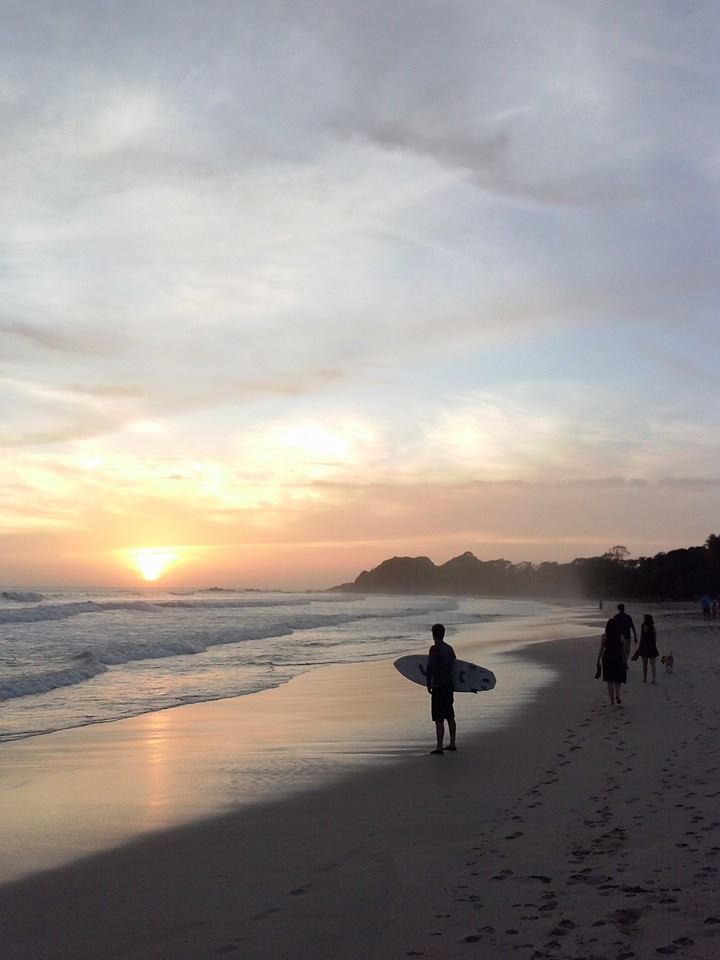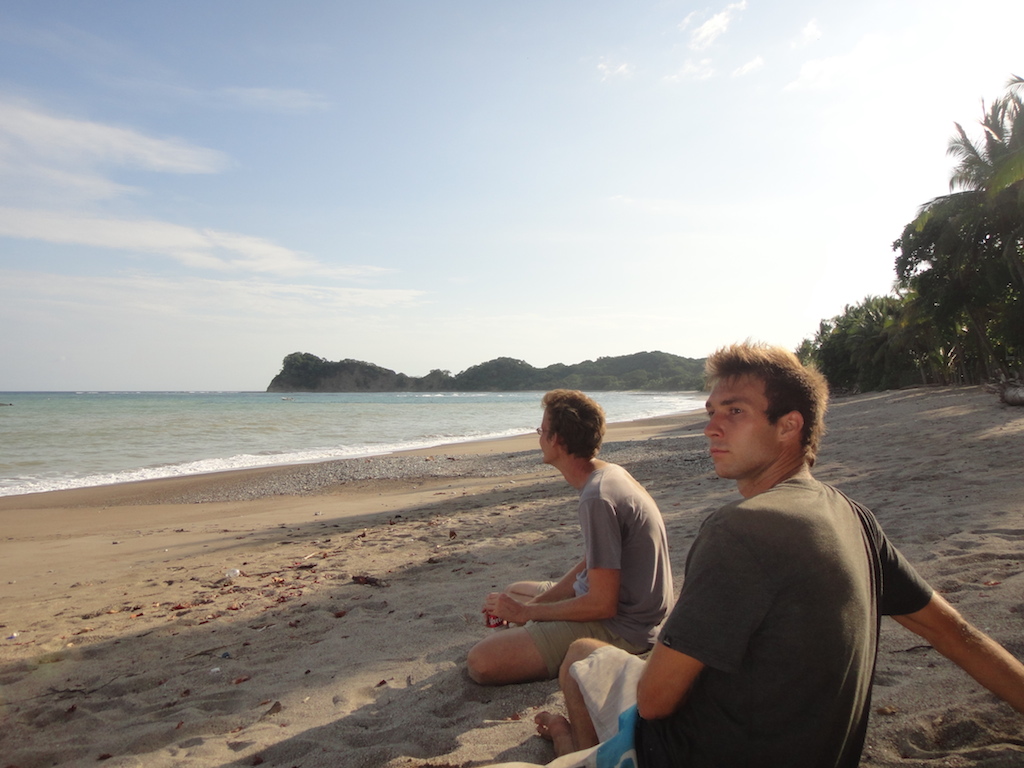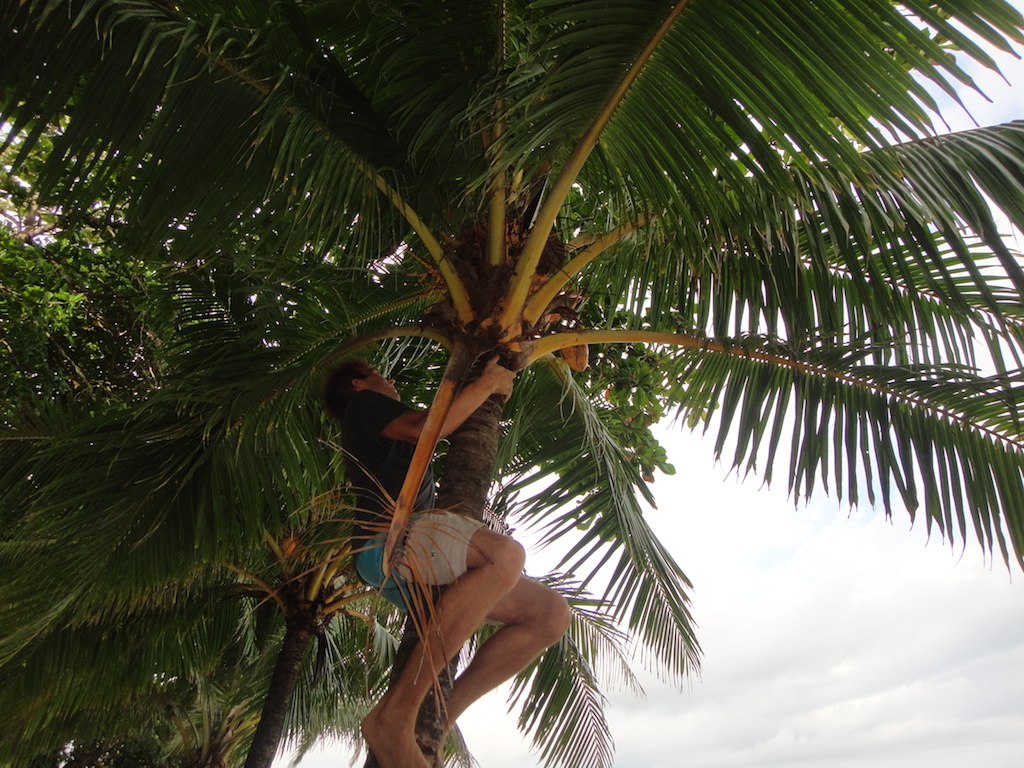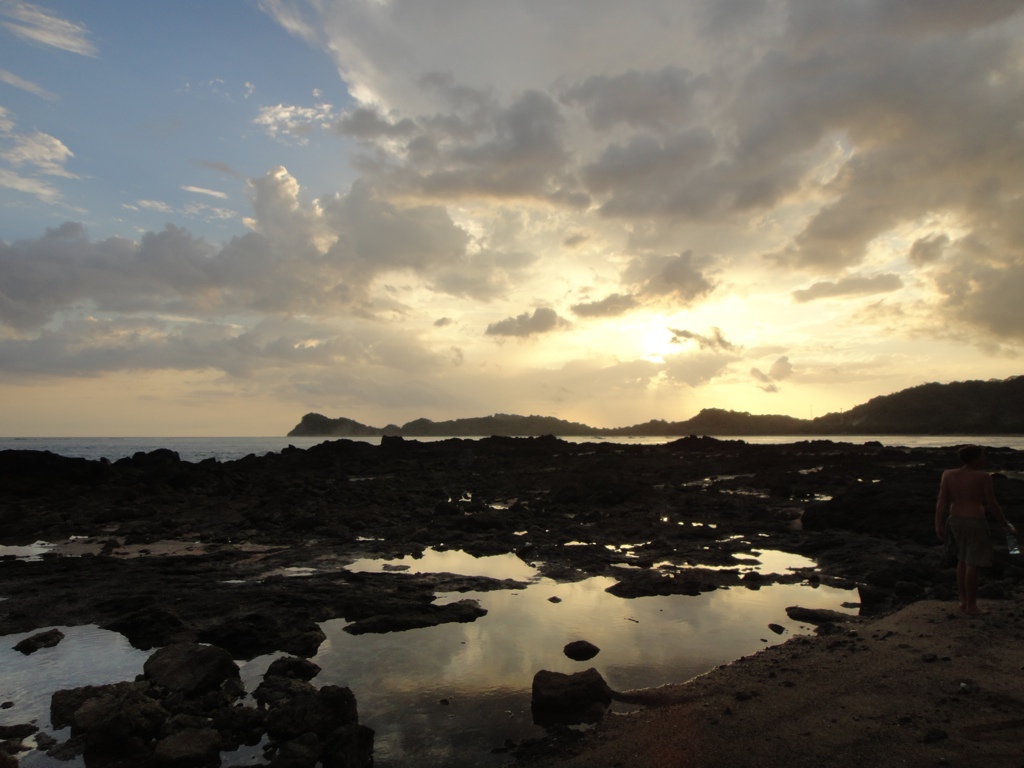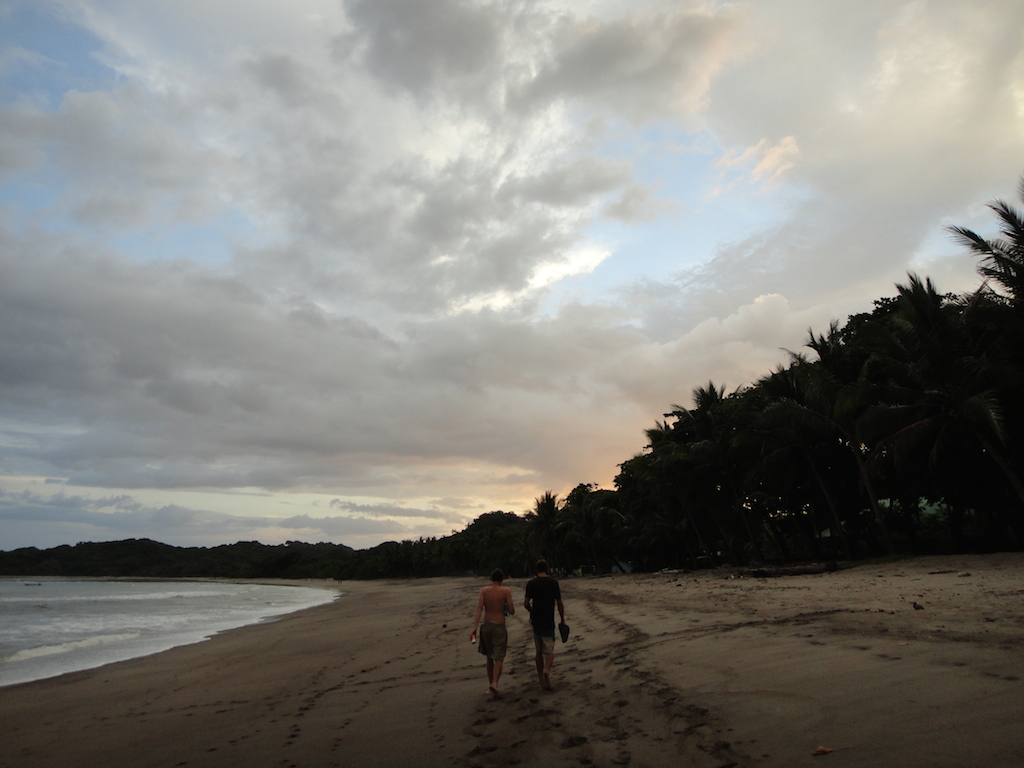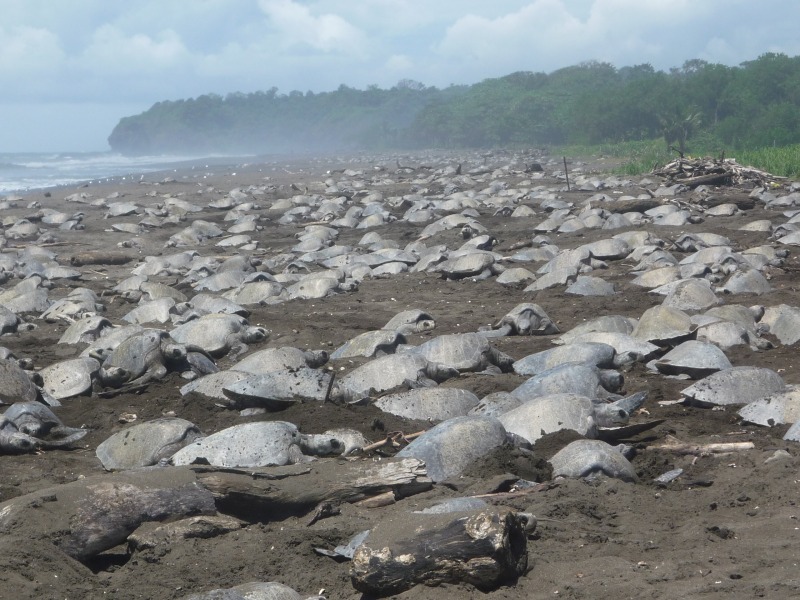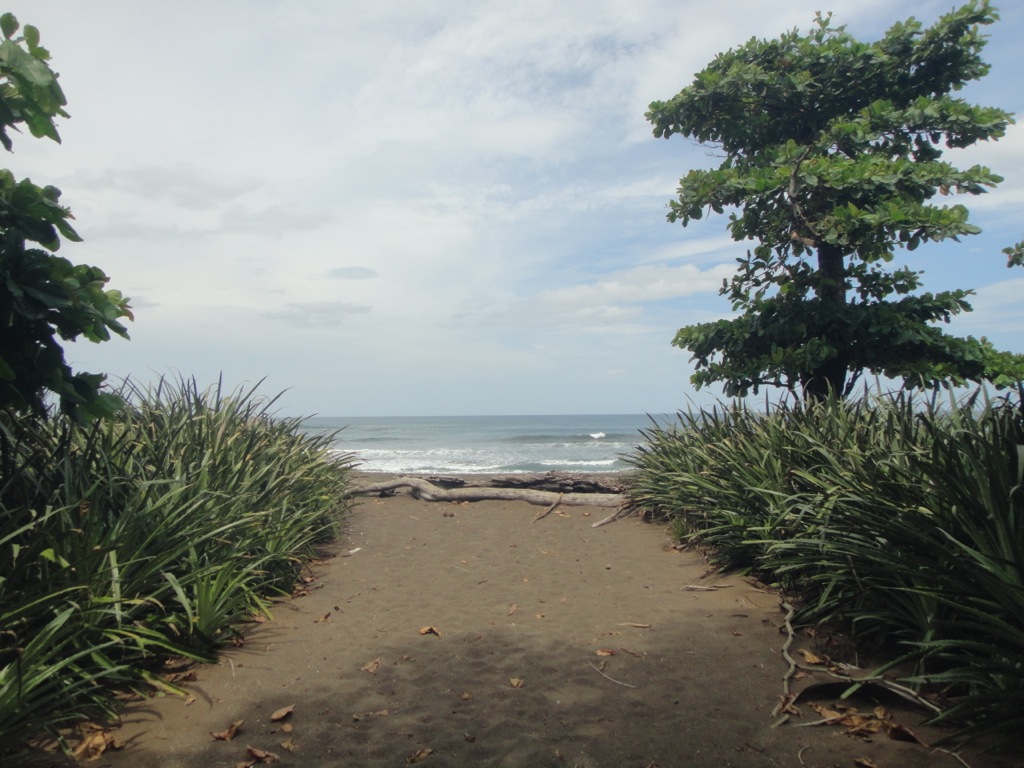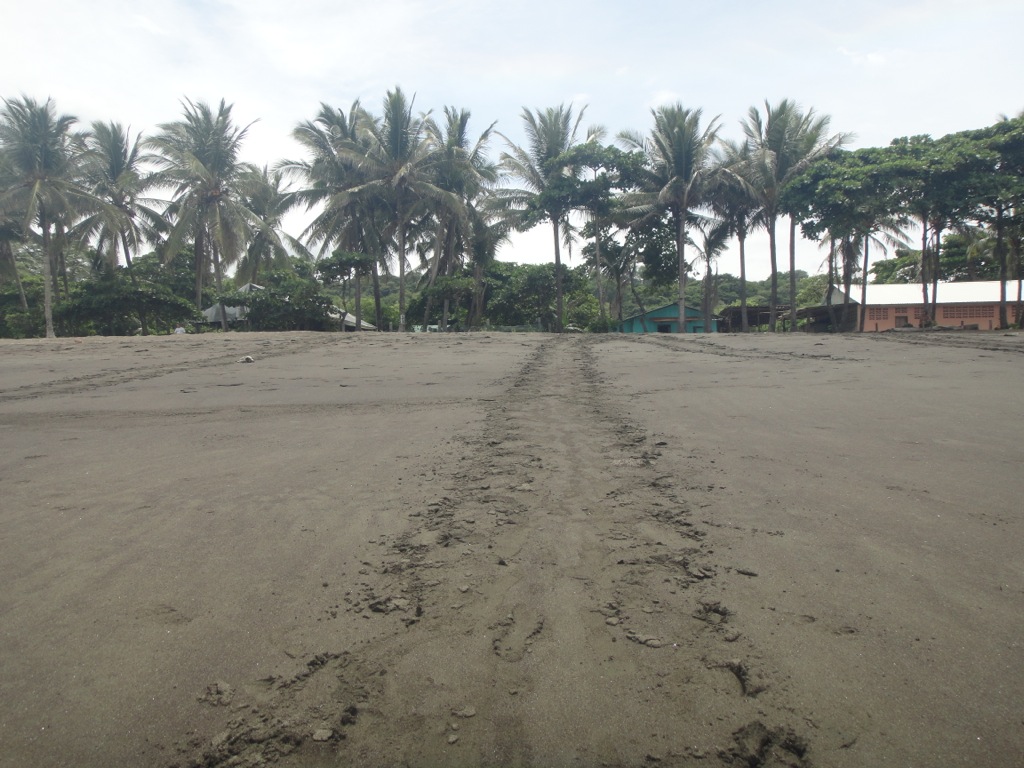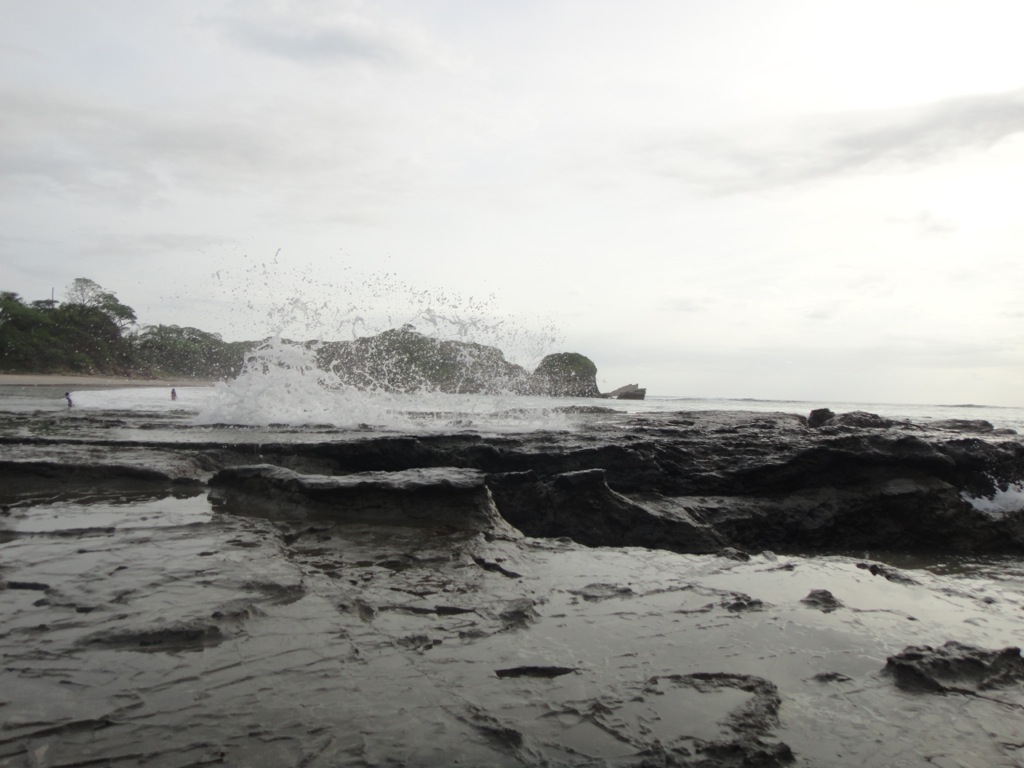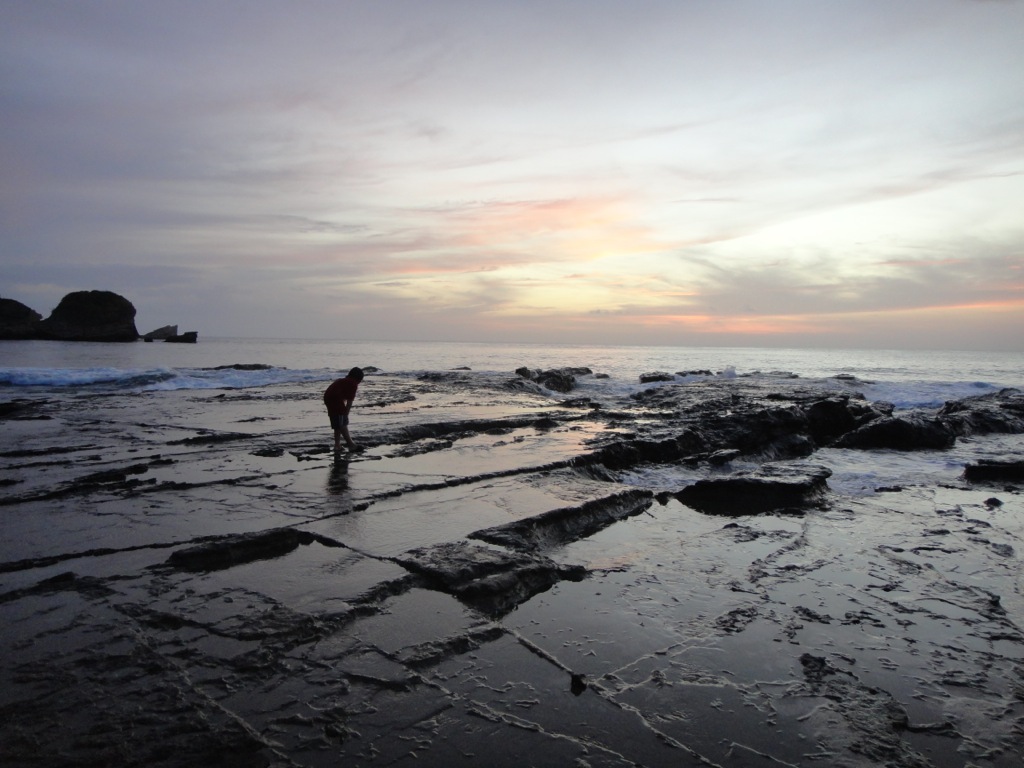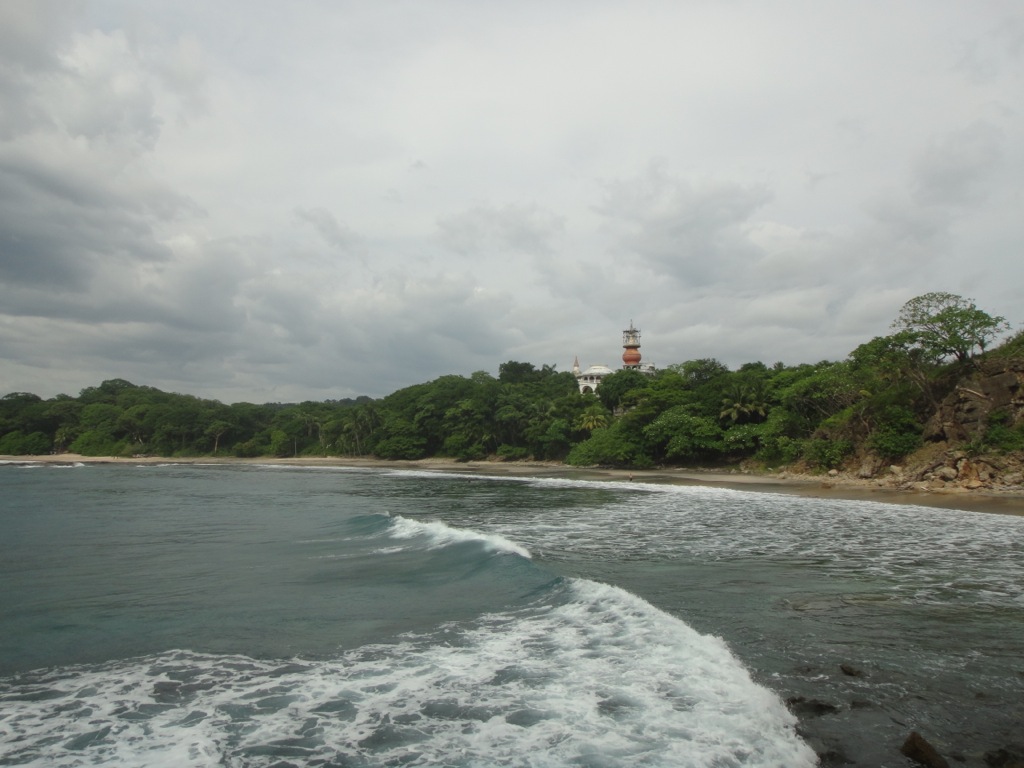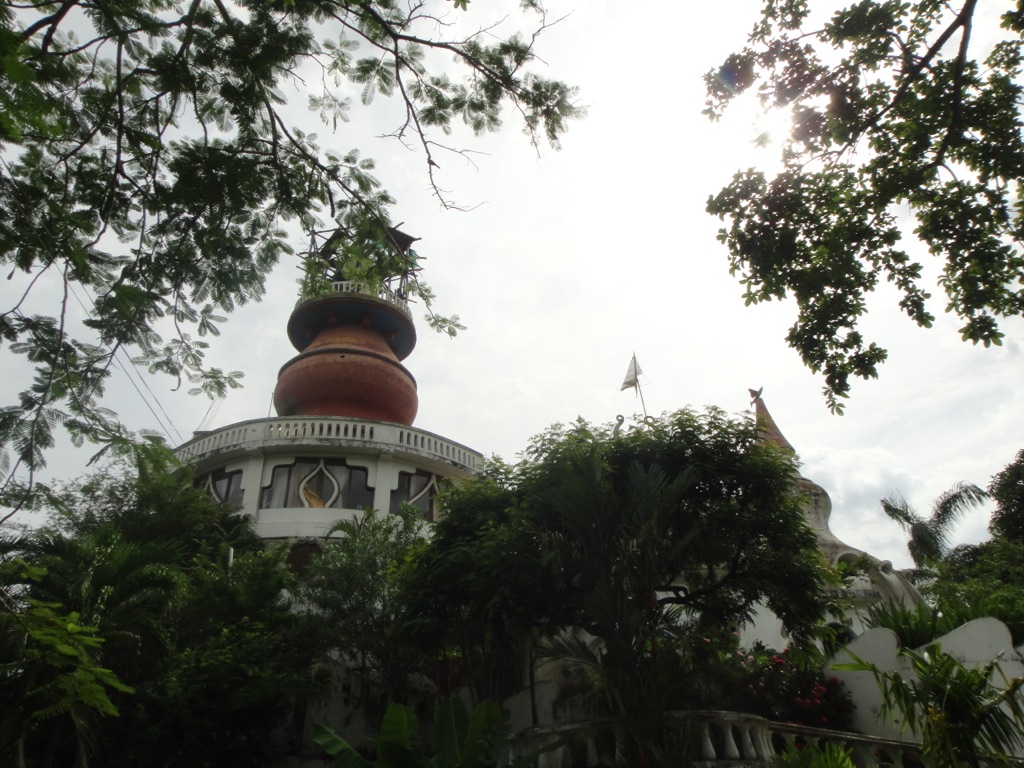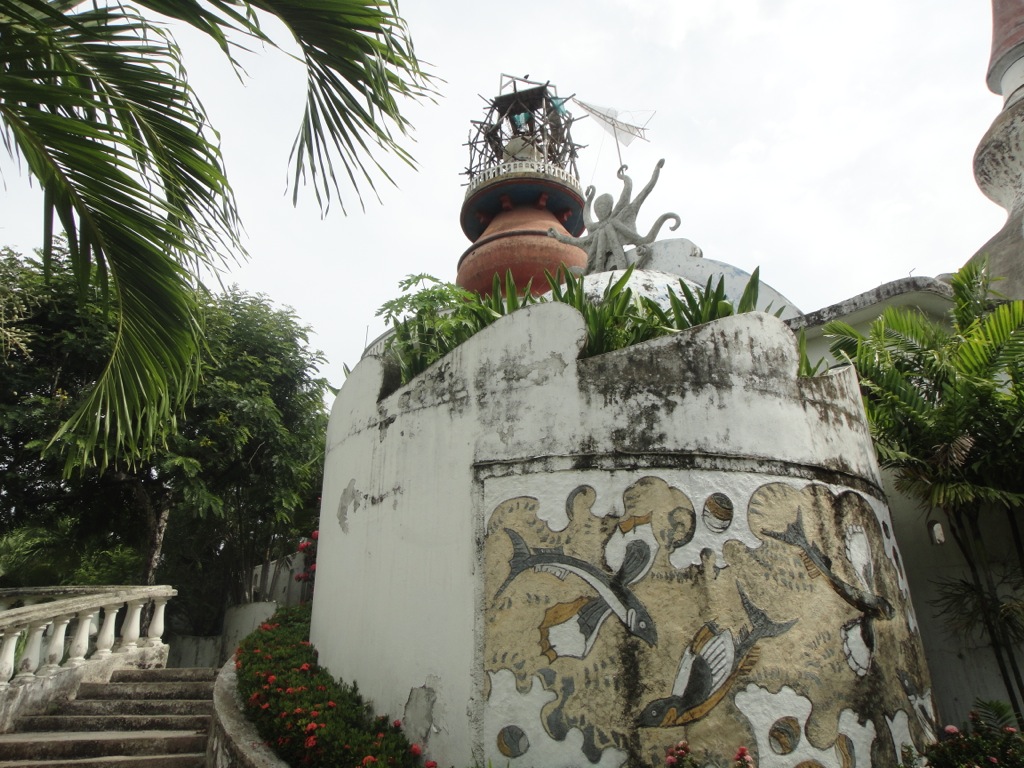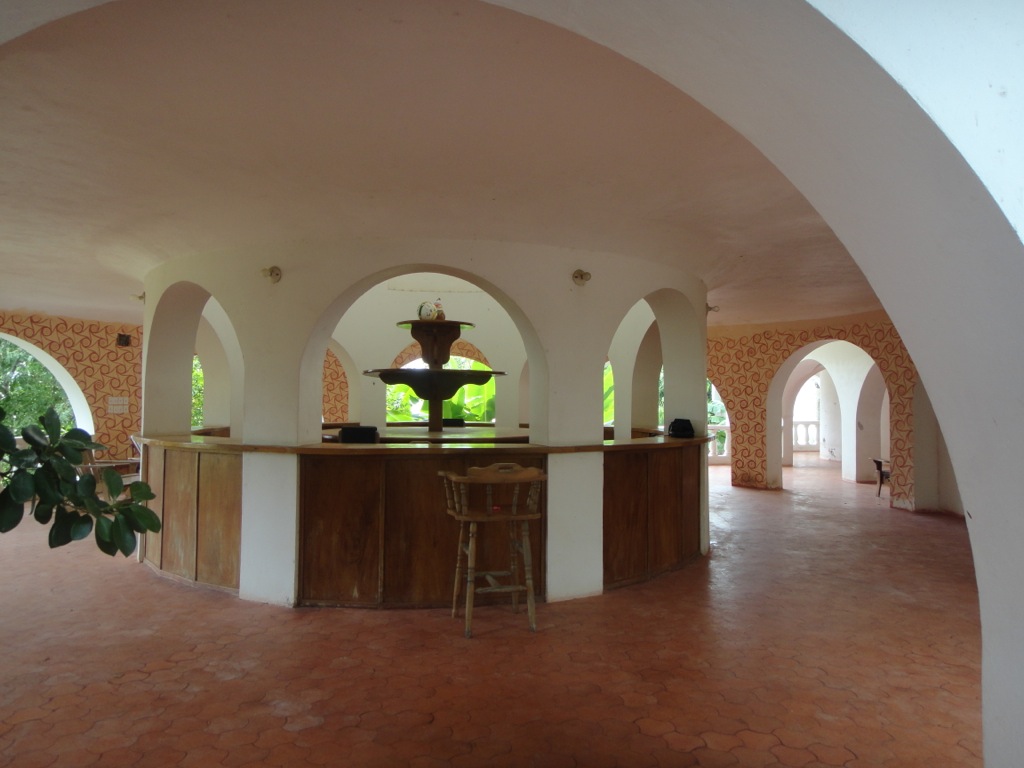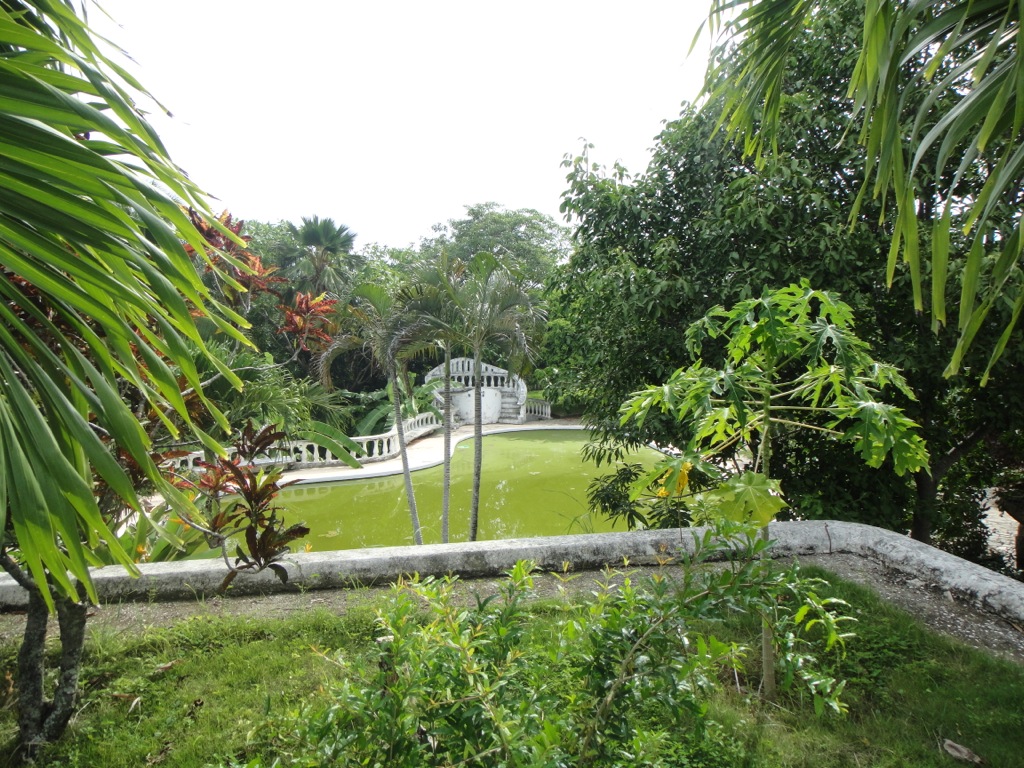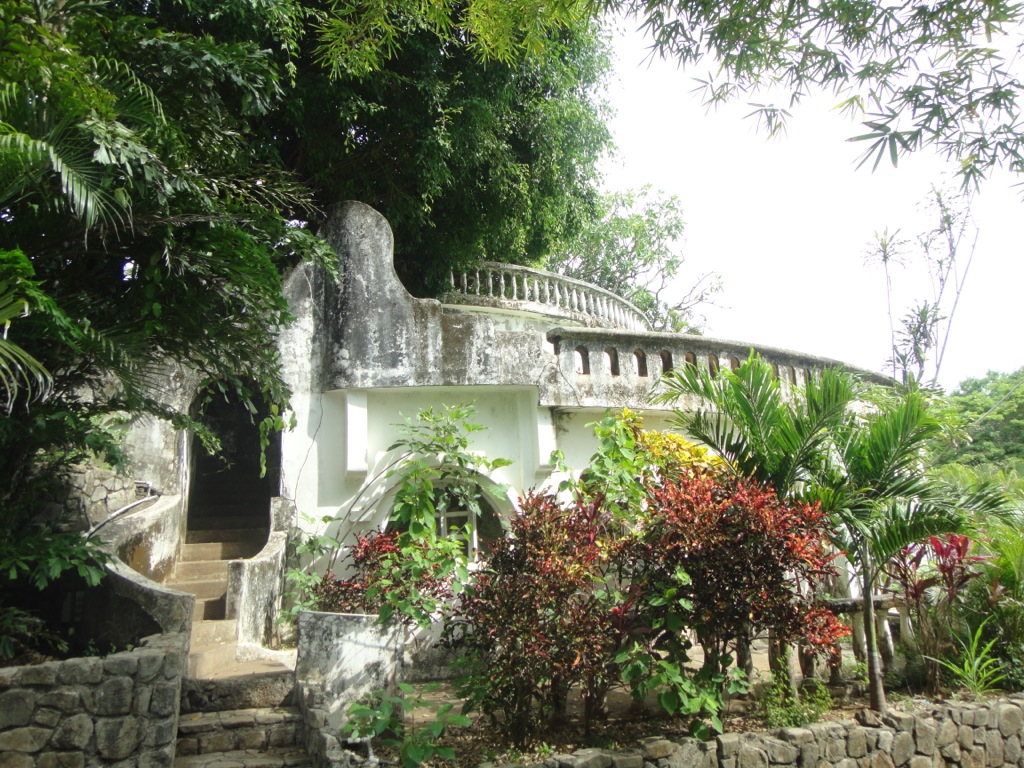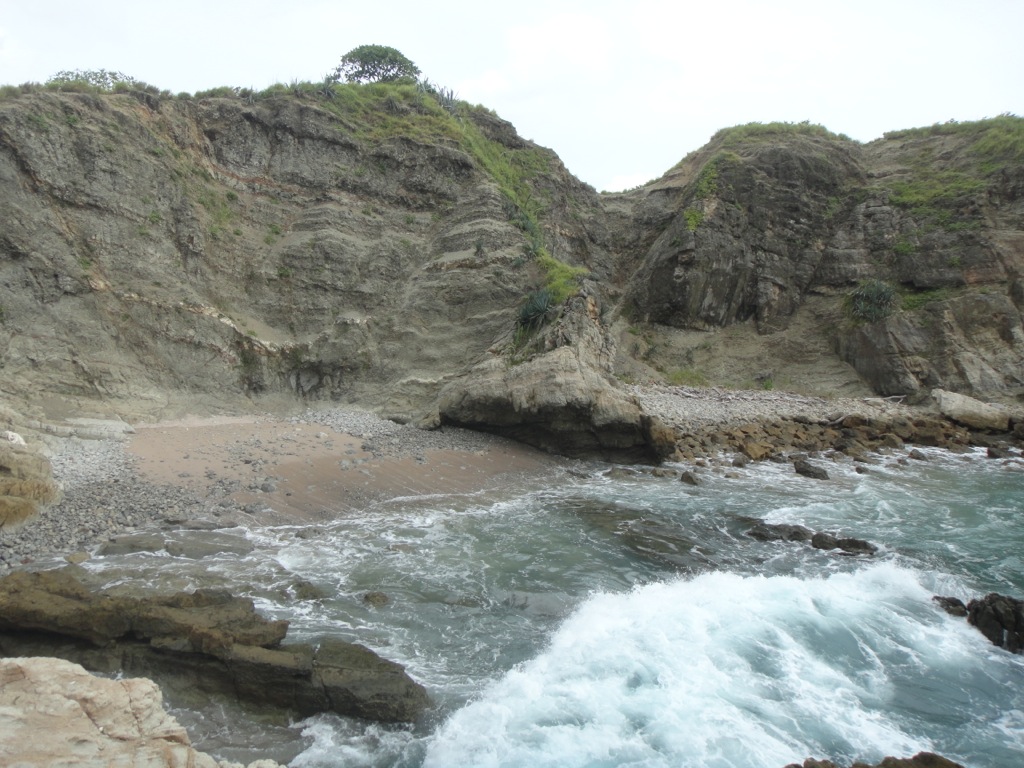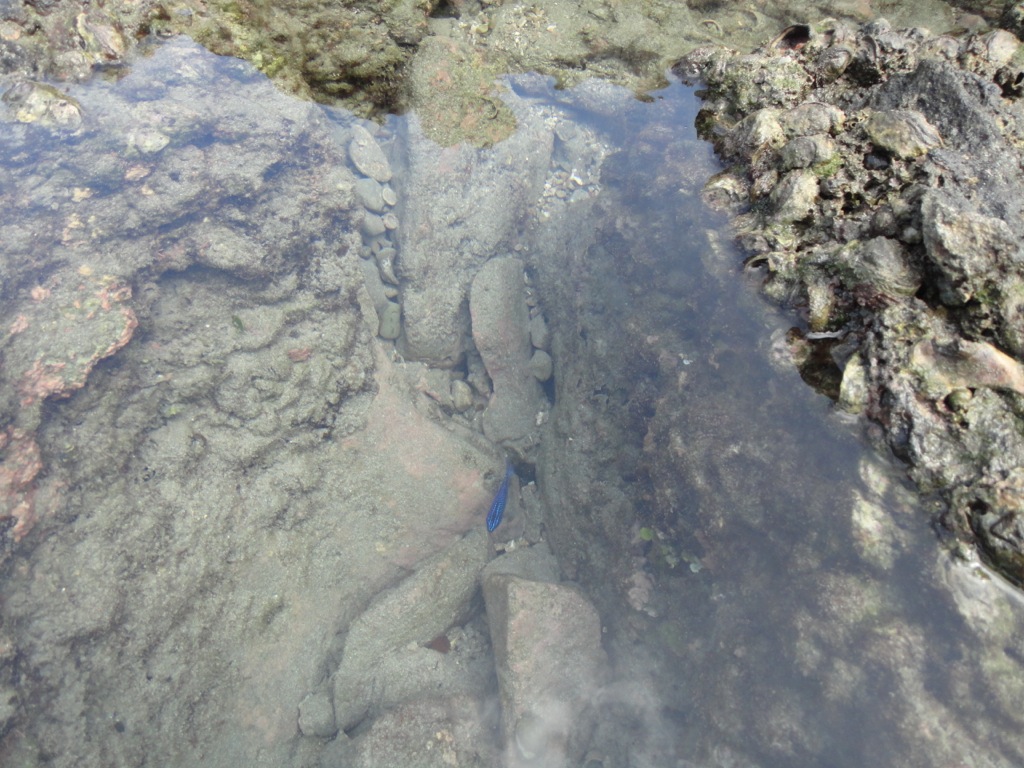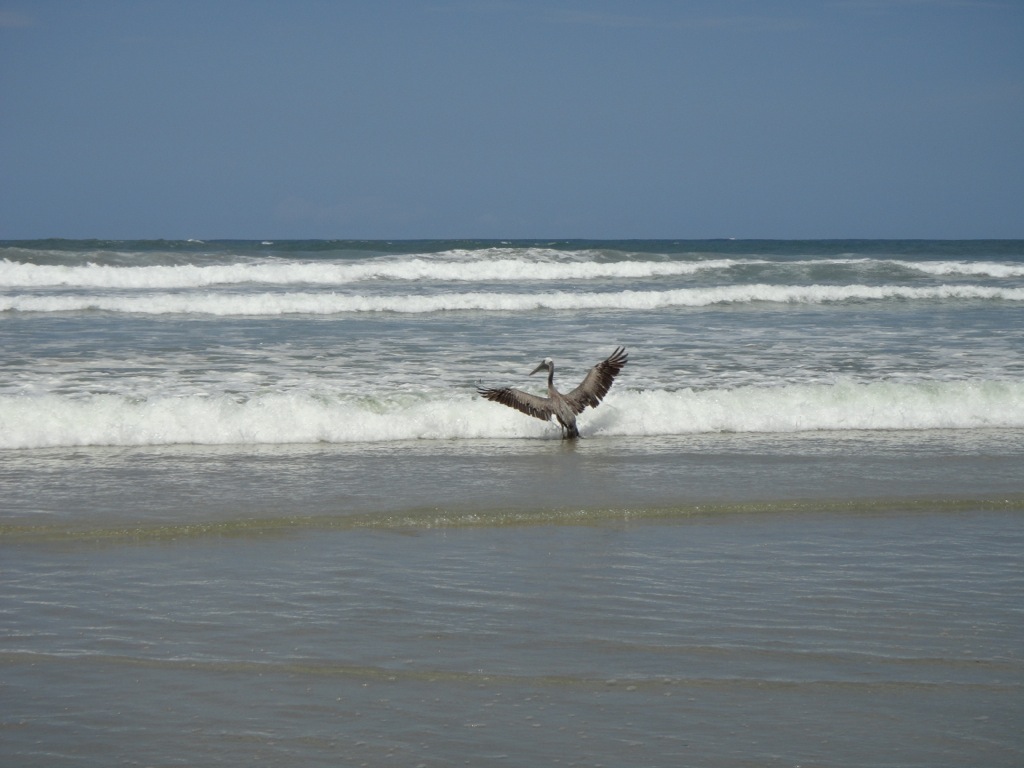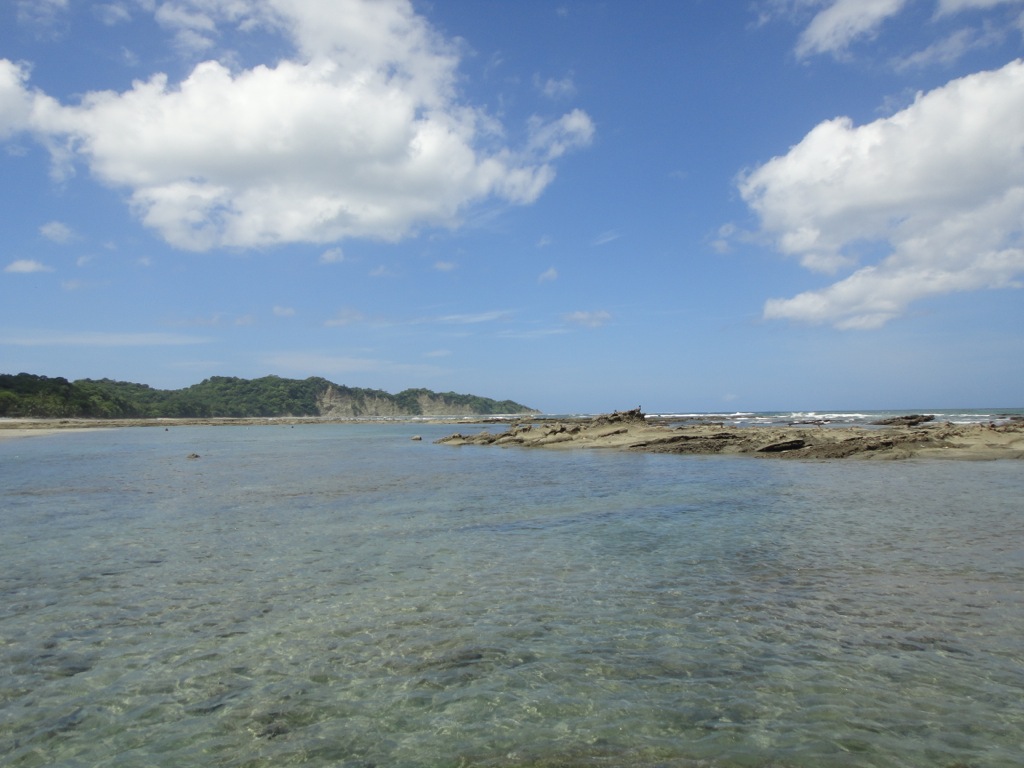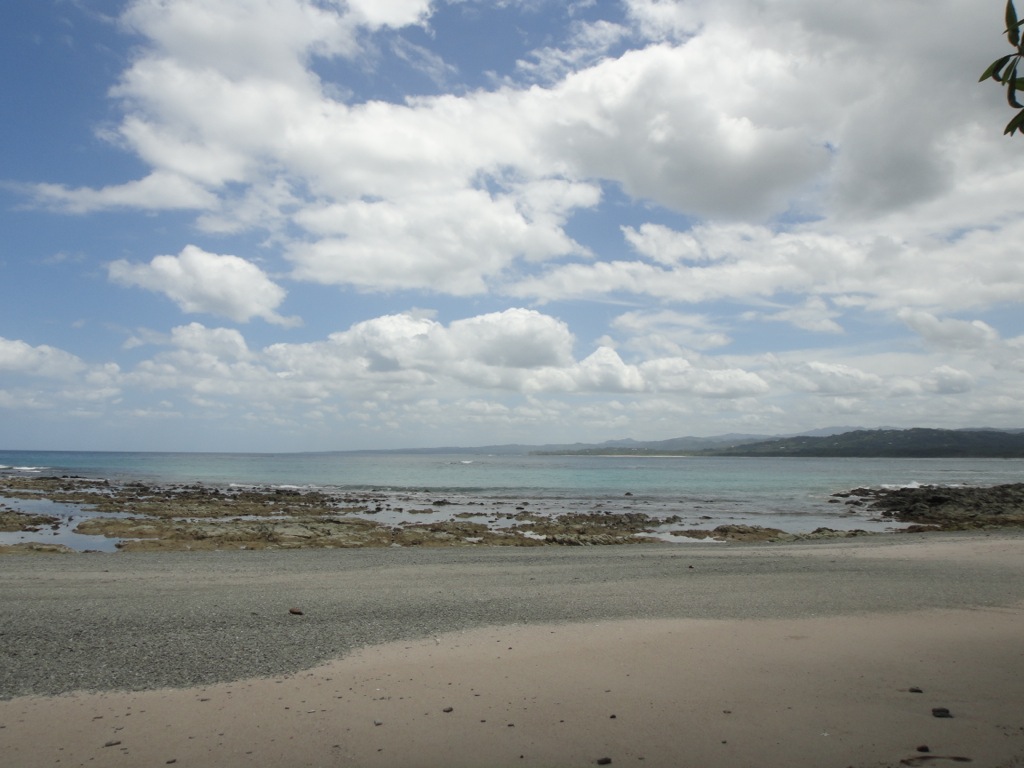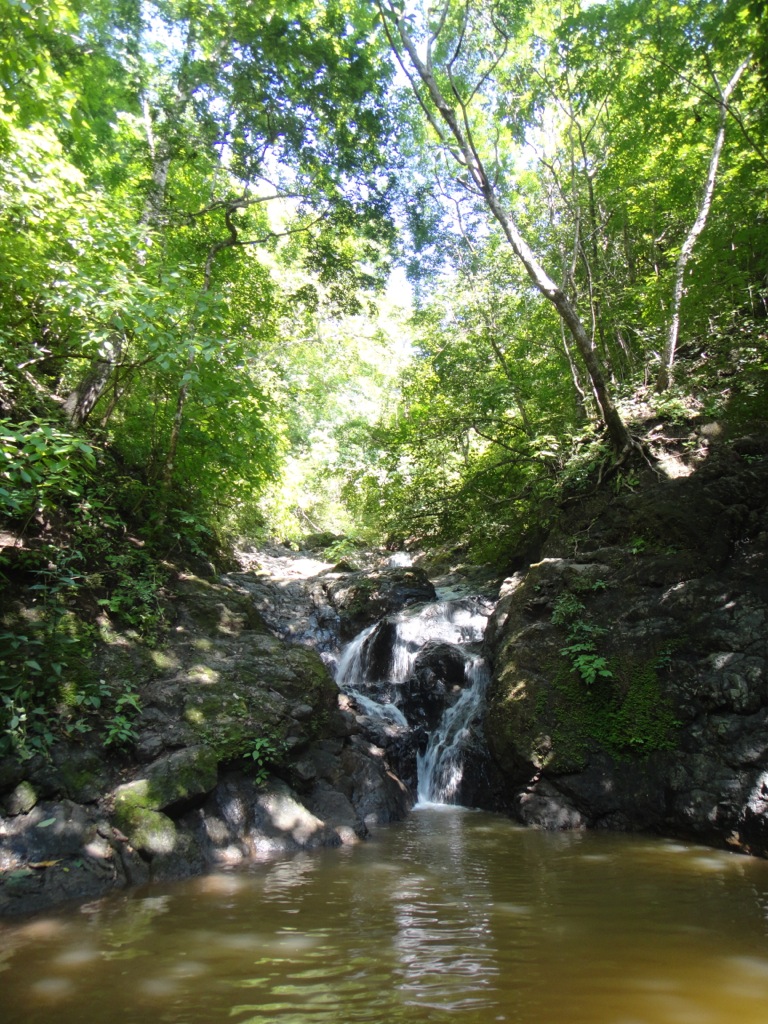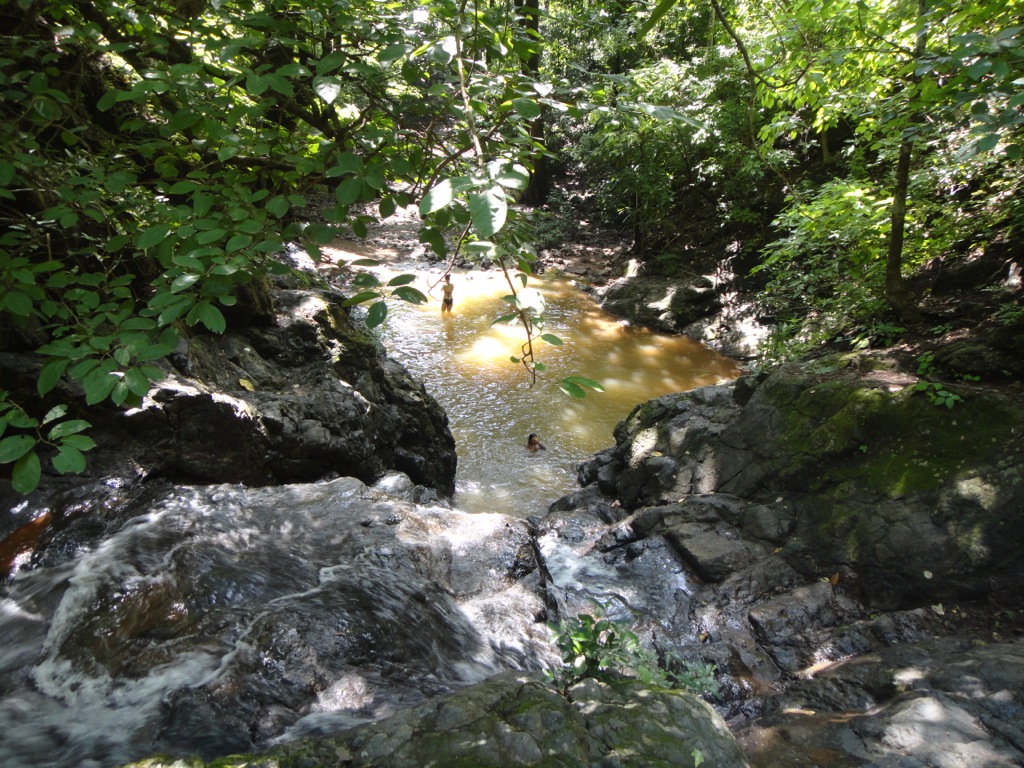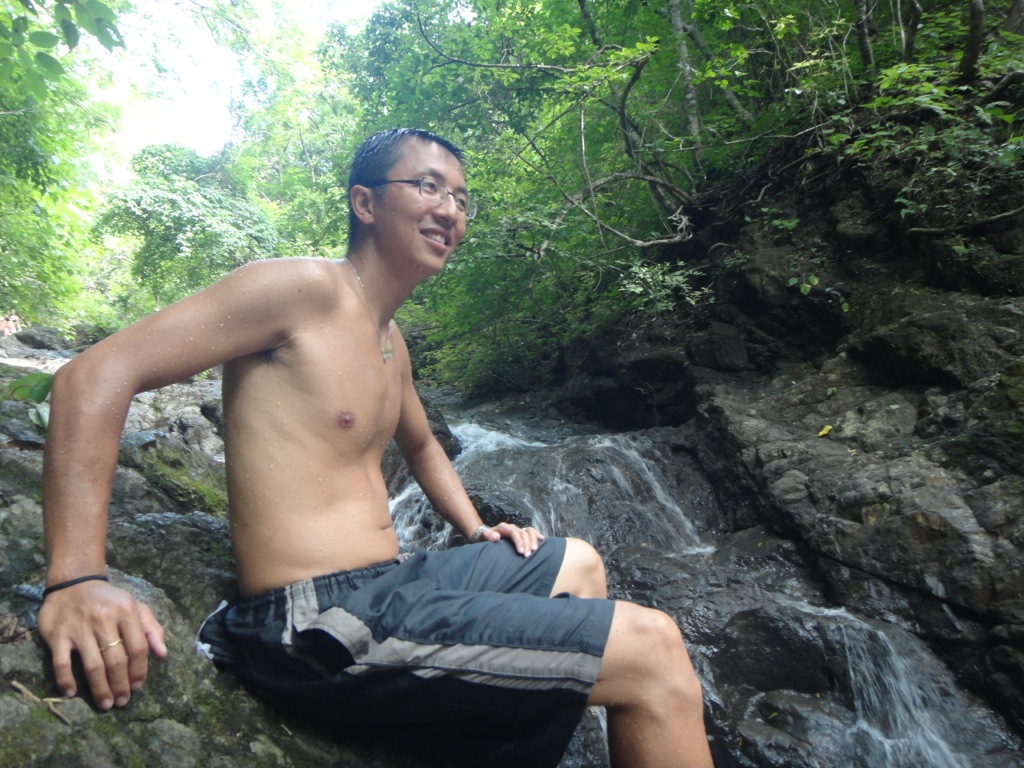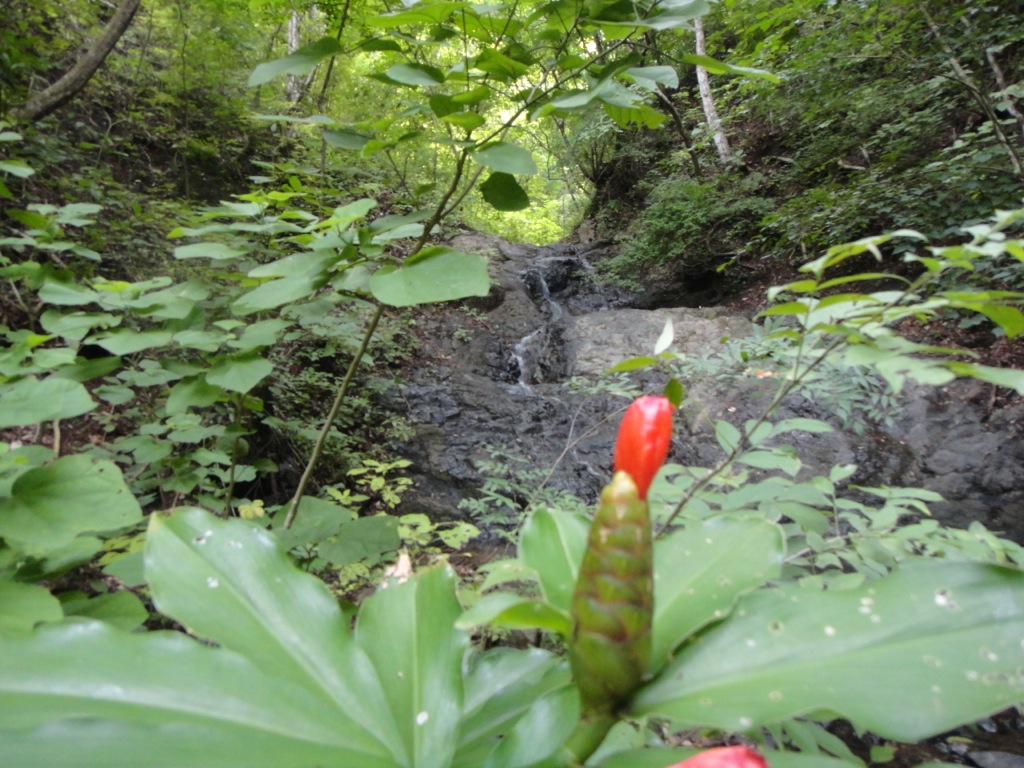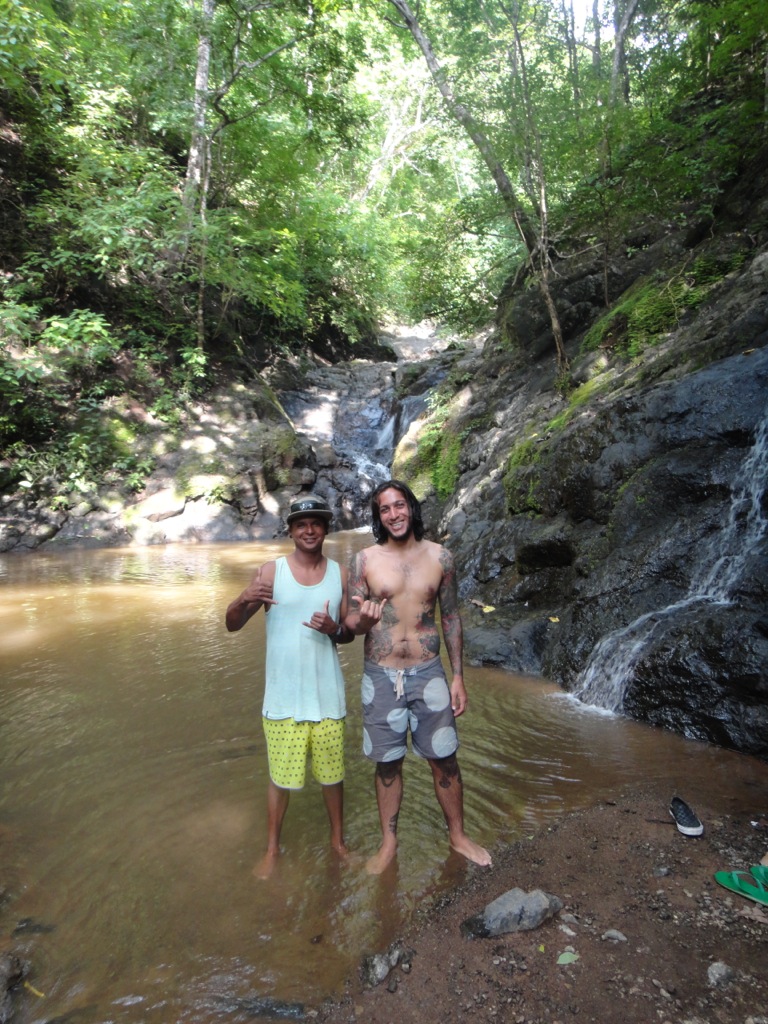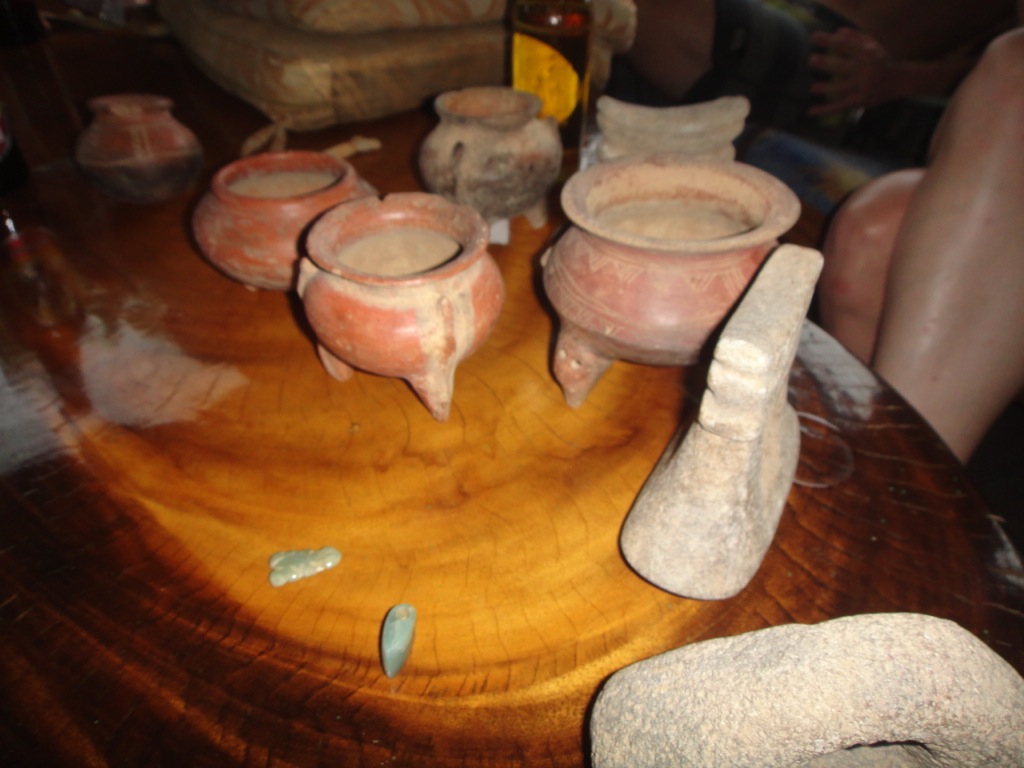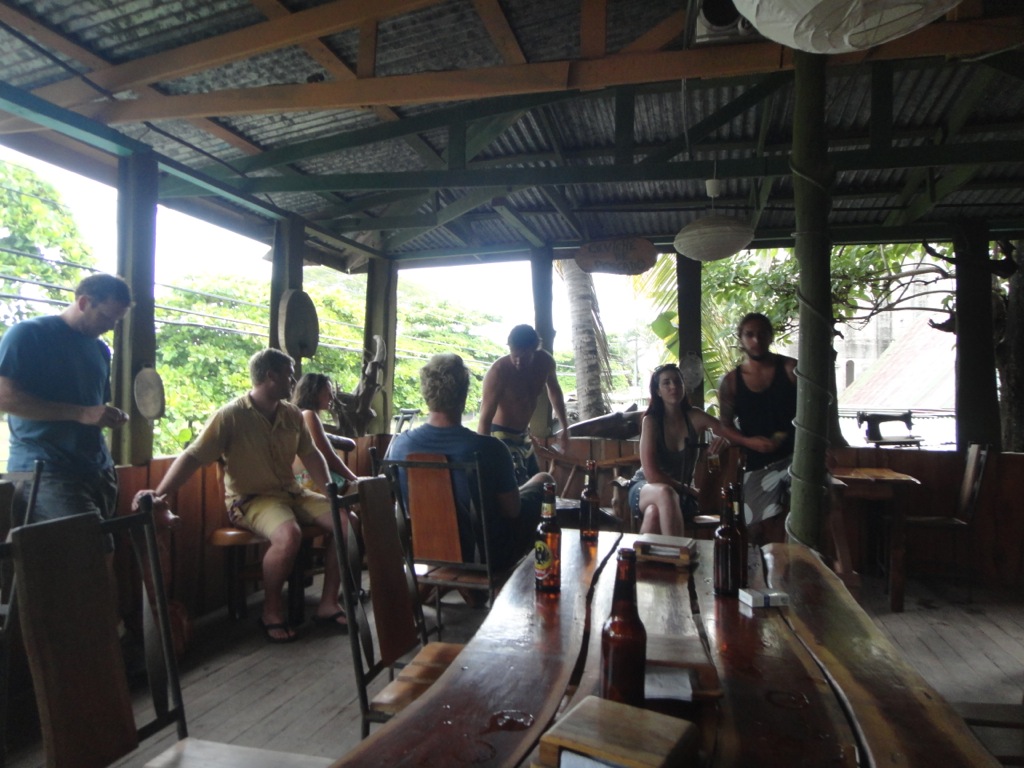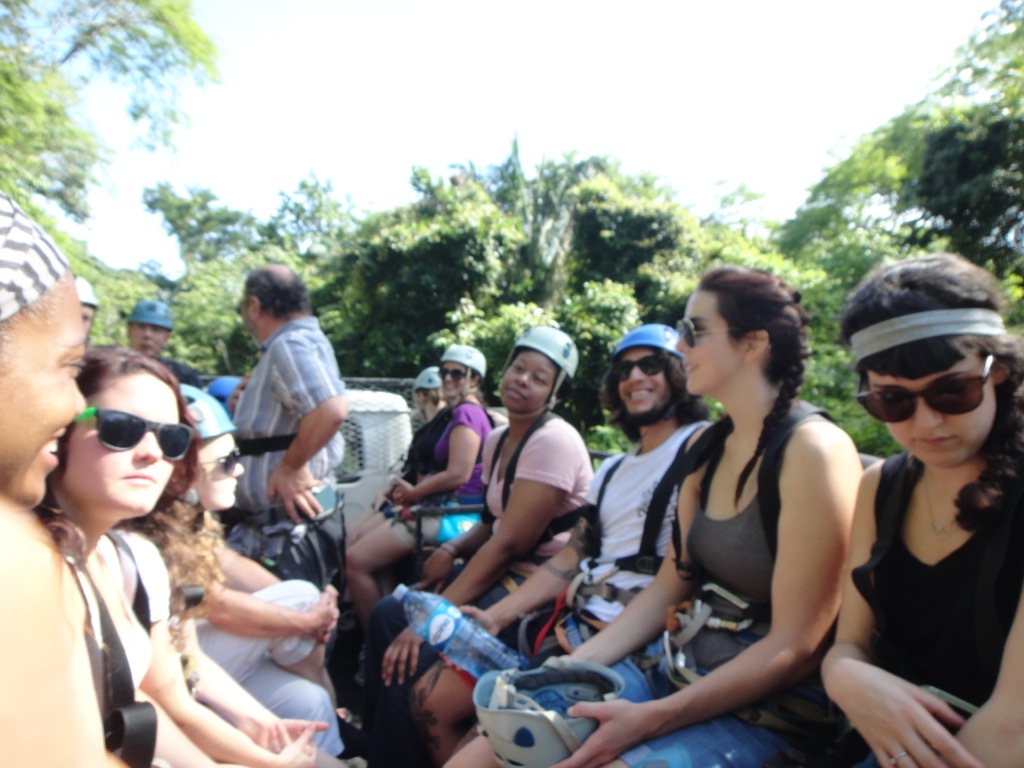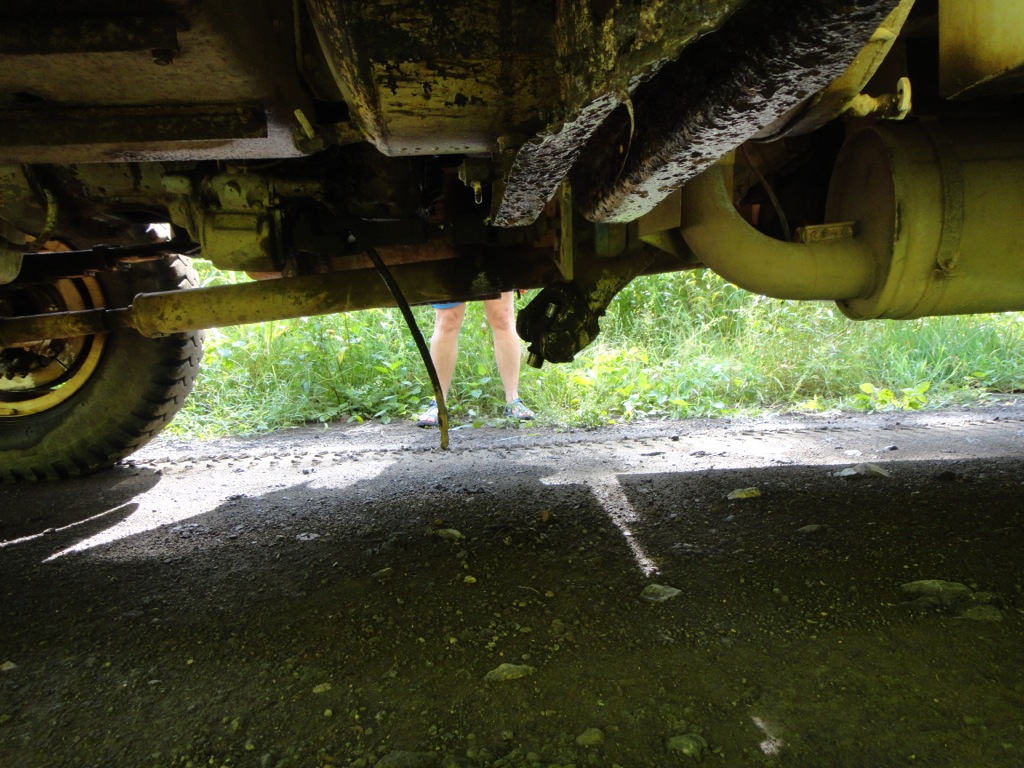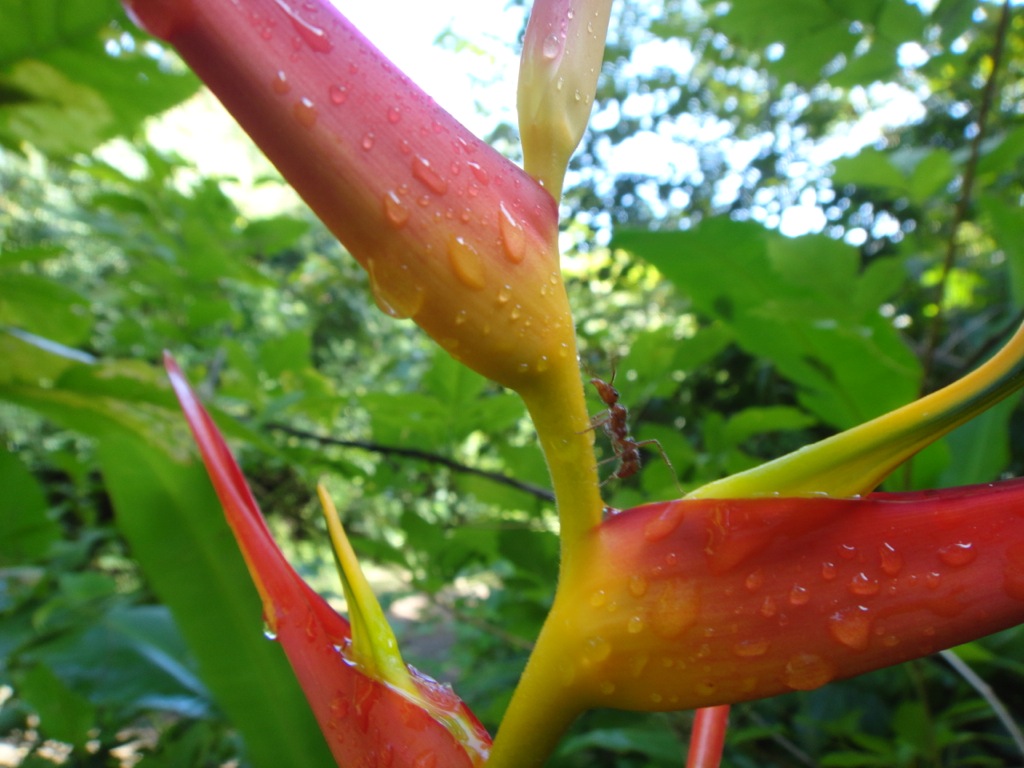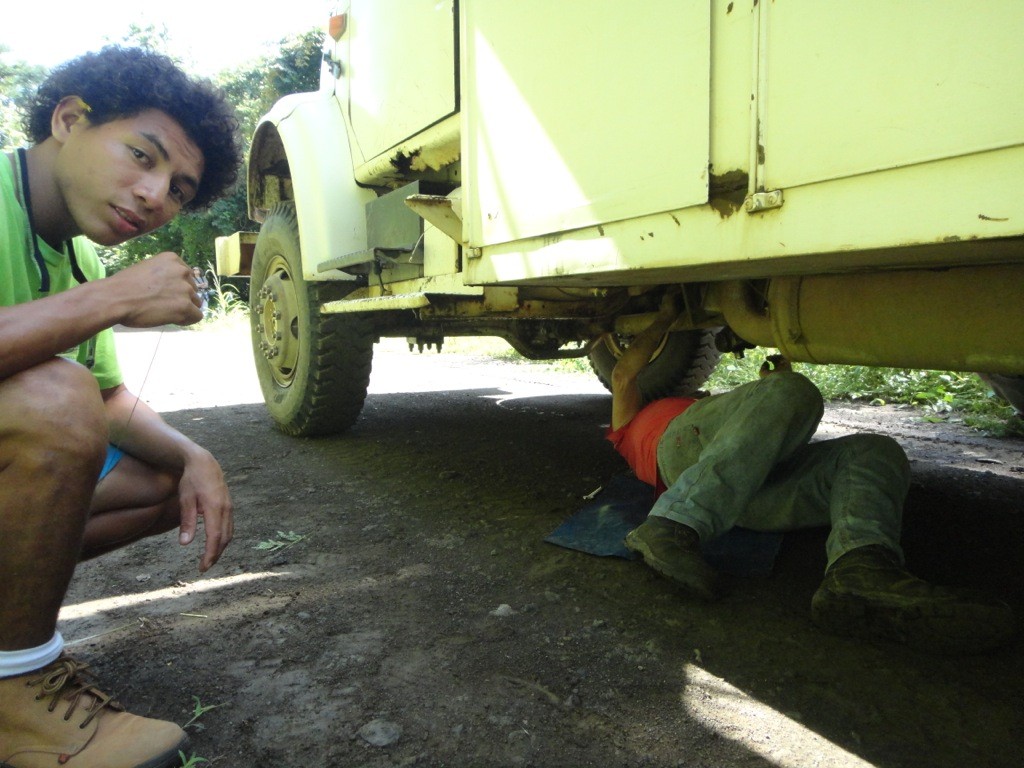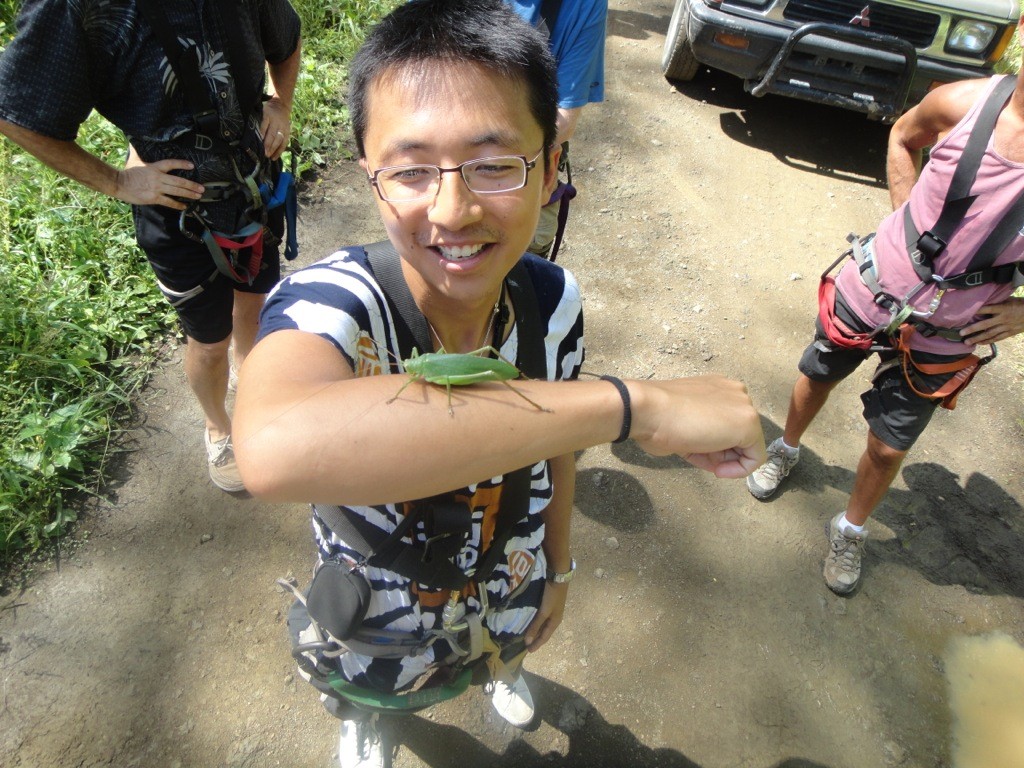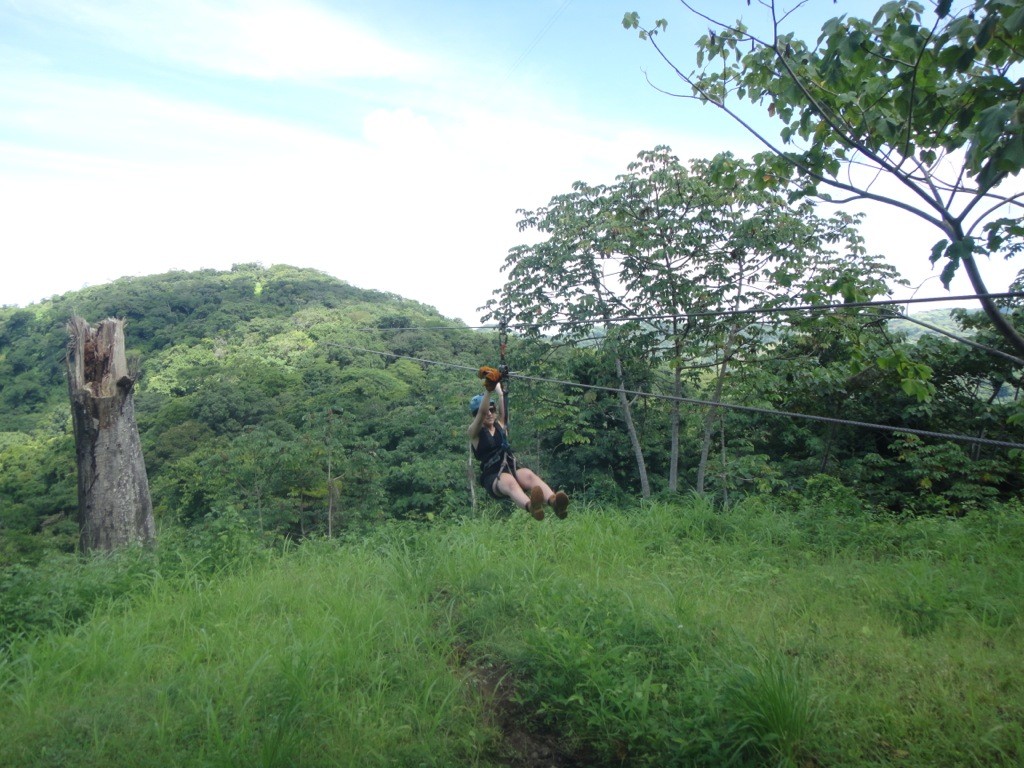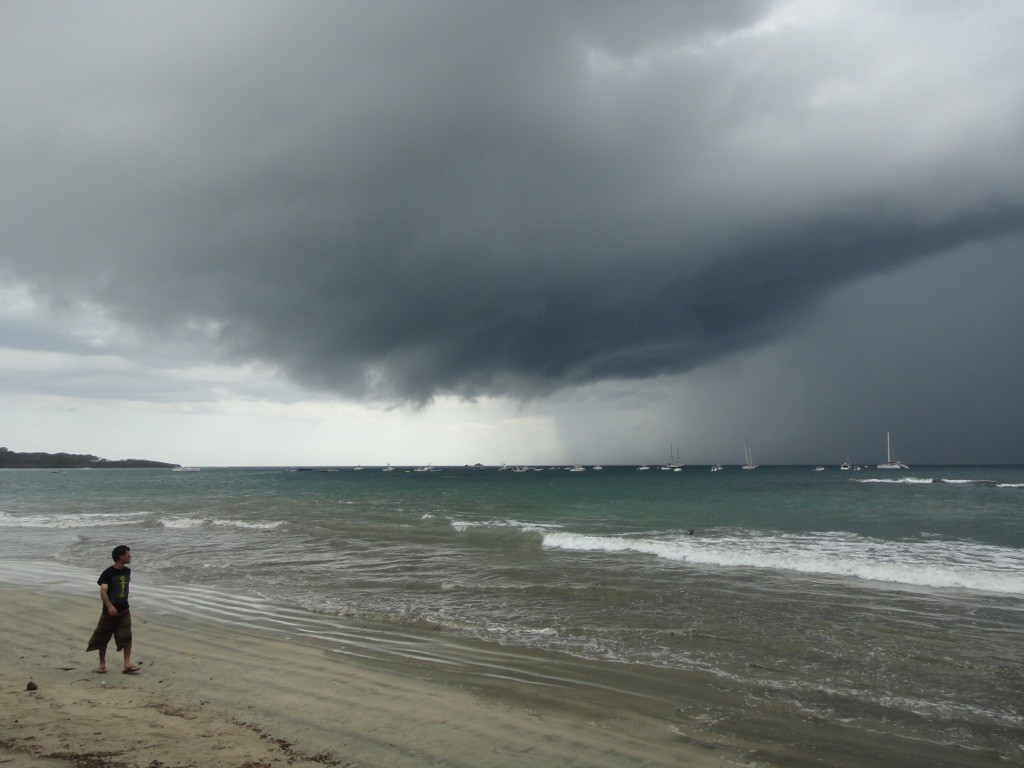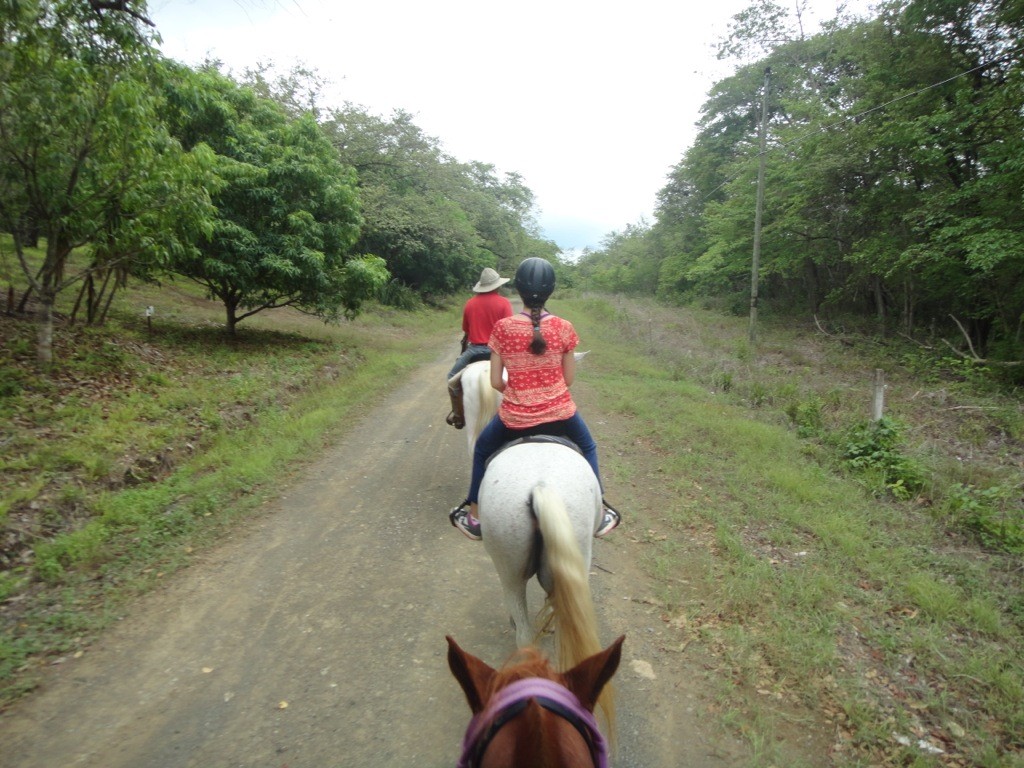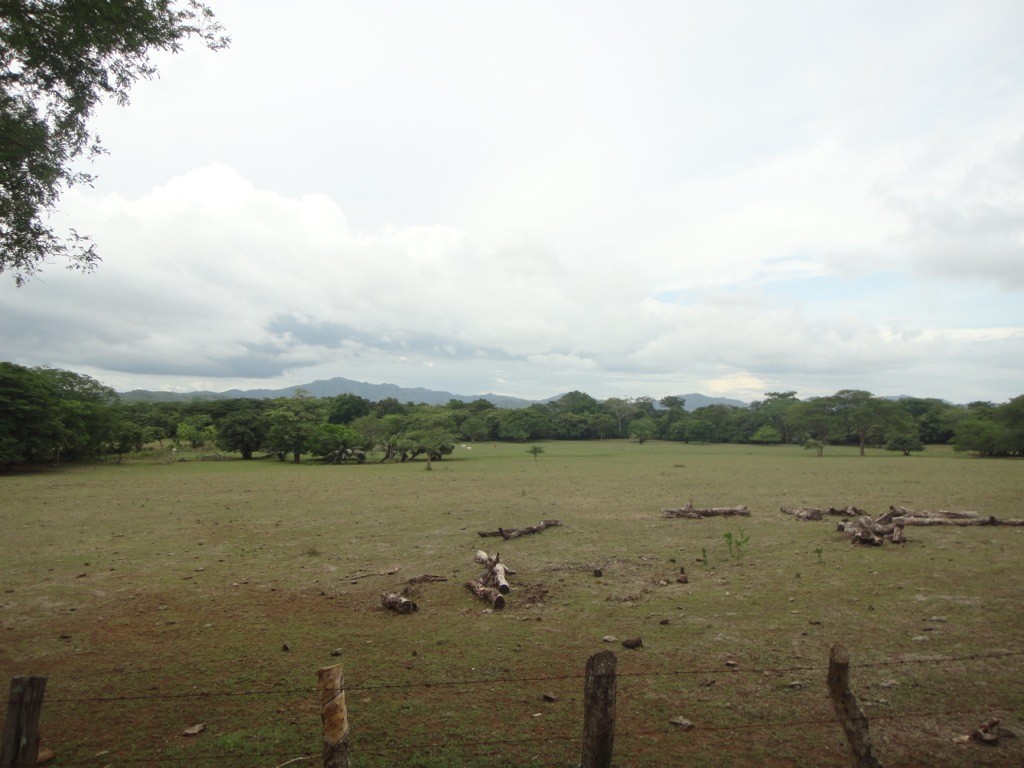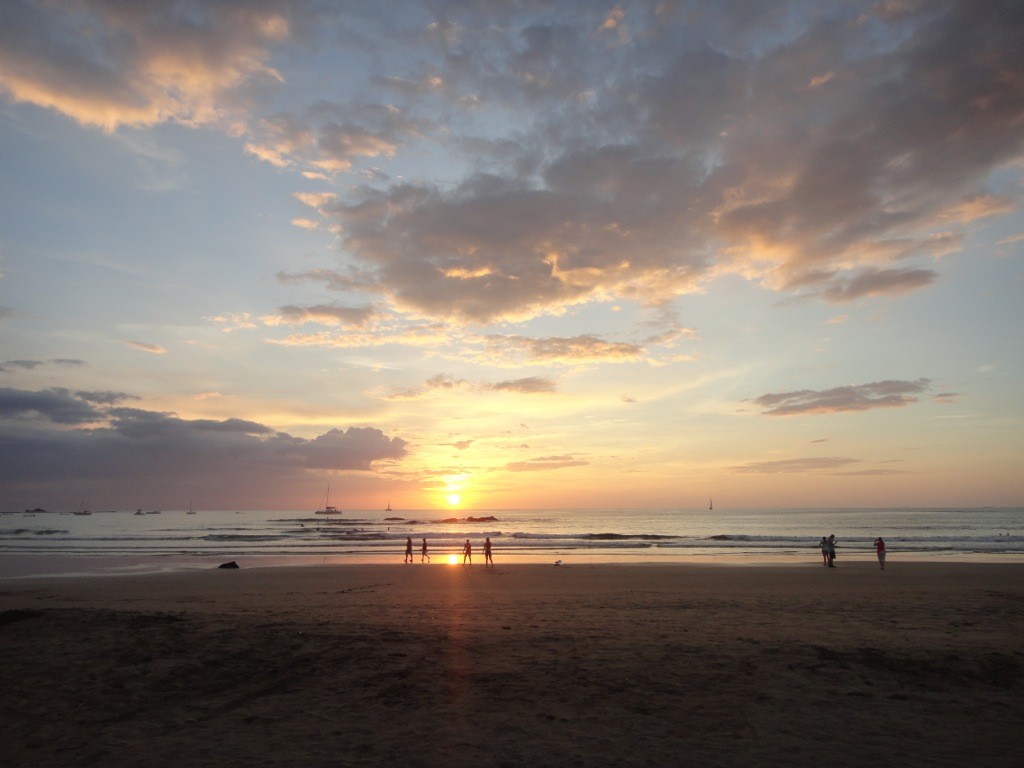The Setting – The Nicoya Peninsula & Nosara
The Nicoya Peninsula is located in western Costa Rica along the Pacific Coast. Most of the peninsula lies within Guanacaste Province. The climate of the Nicoya Peninsula ranges from the drier ranch lands in the north to more of a tropical monsoon climate further south and in interior mountains. It is a region of contrasting landscapes, between the beach, plains, and mountains. Much of the area is blanketed by cattle ranches, and it seems like coffee and cattle are the two major agricultural products of the region.
Nosara and the beaches around it are still somewhat of a hidden gem. The local government has forbidden development right on the beach in Playa Guiones, making it a real haven where you can find peace and quiet even though there is usually a decent crowd of surfers. Oh, and speaking of surfers, Playa Guiones has ideal conditions for surfing: nice, long beachy breaks, usually soft waves, excellent for beginners and pros alike.
Key Takeaways
- Costa Rica isn’t cheap. Plan to spend what you normally would in the States for food especially in tourist districts. If possible, buy groceries and cook for yourself whenever possible.
- Dollars and the local colones can be used interchangeably. Bank of Costa Rica has ATMs that dispense in both currencies.
- Hostels are plentiful and affordable in Costa Rica. You can get rates as cheap as $10 a night during low season.
- Ticos are for the most part friendly and generous. Although the country is very safe in terms of violent crime, petty theft remains an issue. In fact, some friends of mine did get their stuff stolen at night when they left it unattended and unlocked at a vacation rental, even though they only left it unguarded for like 15 minutes.
- Tap water is generally potable, but doesn’t taste that good.
- In more remote areas, quads are by far the best way to get around, even more maneuverable than 4 wheel drive cars. They’re cheaper, too.
Places to Check Out Around Nosara
Playa Guiones is a great base to start from, as Playa Garza and Playa Pelada are within reach from there. Playa Garza is a bit farther, so renting a quad or bike is your best bet to get there, as it’s about 6km from Guiones.
Playa Garza
Nature always does provide. As I found out later, knowing how to harvest your own coconuts and crack them open for the refreshing coconut water inside can be a real lifesaver.
All of the beaches around the area feature volcanic reefs either interspersed between the sand or at each point.
Playa Ostional
Playa Ostional is about 12km north of Nosara. It is a volcanic black sand beach that is well known in the area for being a sea turtle nesting ground. The beach is a protected nature refuge, and hosts Olive Ridleys and Leatherbacks depending on the time of the year. Sadly, I wasn’t able to see the turtles for myself, as they come very early in the morning and only in great numbers on specific days.
But I’ll start with an image of the beach during high nesting season. When there aren’t a ton of turtles everywhere, the beach is serene and a great place for you to get some solitude if you need it.
Playa Pelada
Despite the fact that Playa Pelada is a bit more built up than Guiones, it is distinctively more populated by locals than by gringos and surfers, in part because the reefs in the middle of the beach are not conducive to surfing. There are a couple chill places to eat right on the beach, Bar Olga’s, where you can get an ice cold Imperial beer during happy hour for $1, and La Luna which is an upscale restaurant featuring brick oven pizza, fancy cocktails, and delicious tacos.
By way of mentioning food, you should be aware that Costa Rica is not cheap. You can expect to spend about the same per meal as you would here in New York, especially if you’re in a more touristy area. Your best option for cheap eats is to look for local “sodas”, which are your roadside hole-in-the-wall type establishments where you can get a solid meal for less than $5.
Playa Guiones
Aside from surfing, Playa Guiones has some intriguing features on the northern and southern points.
First, we’ll start with the northern point, upon which sits a mysteriously Gaudi-esque abandoned hotel. There are various stories about this hotel. One local told me that its foundation was wrecked during an earthquake and that restoration work is going on, while the manager of the Nosara Beach Hostel told me the hotel was constructed by a wealthy adopted Greek man. However, the local government basically nixed the project after it was built, in line with its prohibition on significant development near the beachfronts.
So, as I understand it, the only resident now is that eccentric Greek owner.
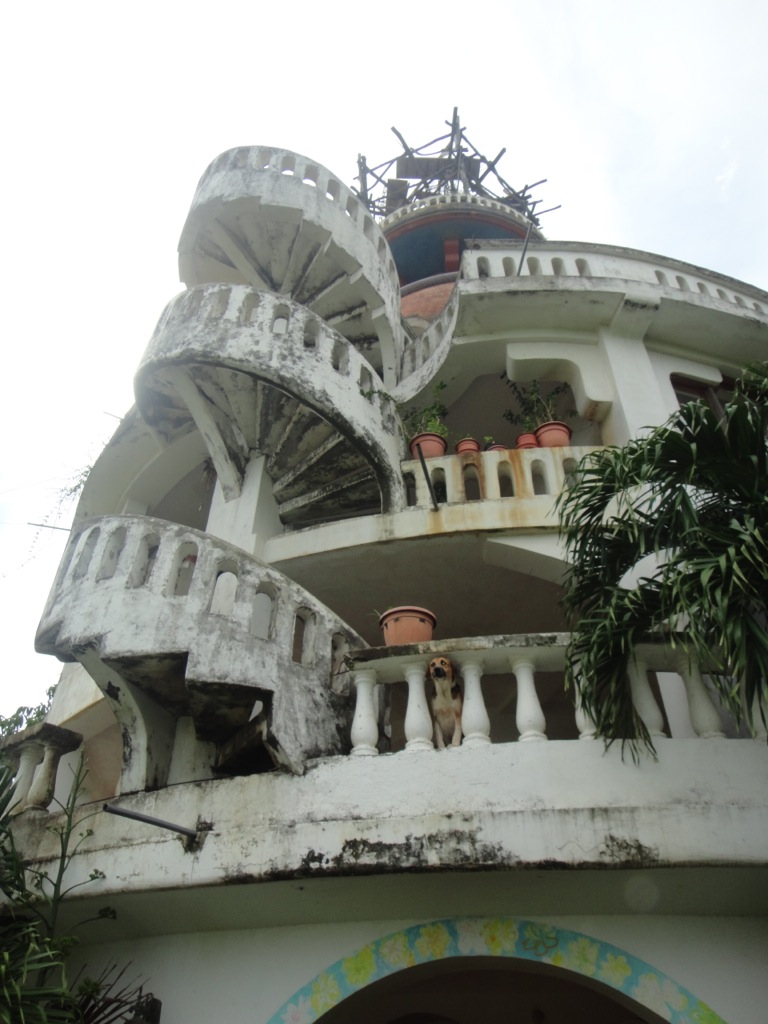
In the vicinity of the hotel, there’s a rocky point that separates Pelada from Guiones. If you climb the point, you can see breathtaking vistas of the beach and find a hidden cove and beach.
On the southern end of the point, there’s a pink sand beach and some more tide pools. The pink coloring is subtle, but definitely noticeable in contrast with the other sand. Again, this area is only accessible during low tide, and there is a fantastic tide pool for swimming during that time.
Incidentally, when I walked there with two friends, we foolishly did not bring enough water. I went and explored a bit further, and when I came back, my friends had departed. It was now high noon with no shade in sight. I realized that I was getting seriously dehydrated. I attempted to harvest some coconuts, and like a scene straight out of Castaway, the I failed miserably at the first tree I encountered. At the second tree, I successfully got two coconuts down, but they instantly cracked open on rocks below the tree and all of the life-giving coconut water was lost to the sand.
Finally, at the third tree, I was able to get a coconut down and crack it open for the water. There happened to be a Tico walking by who saw what I was up to. He came out of a fishing shack with a machete and gave it to me, telling me to use it instead of cracking the coconuts open by hand. He also had a big coconut that he gave to me. Saved me from heat stroke. I couldn’t believe a guy would just hand a total stranger a machete, but Ticos are just cool like that.
Mano Noche Waterfall
About 30 minutes from Guiones, and 15 minutes outside of Nosara Central, lies Mano Noche, a waterfall that’s well known by the locals. Although it was technically the wet season, it wasn’t raining as much as the locals said it should be (i.e. like 6 hours a day).
As you can probably tell, Mano Noche would be quite a bit more impressive during the peak of the wet season, while during the peak tourism season that corresponds with the dry season, this would be a trickle. The falls were big enough to jump off of, but also small enough to be able to climb up. Our surf instructor took us out, and also brought us to his uncle’s restaurant to eat some ceviche and check out ancient Chorotega artifacts.
Miss Sky Canopy Tours
On the way to my first zipline experience, my group ran into an unforeseen problem: the tour truck’s driveshaft broke in half and we sat on a jungle road for about an hour and a half before the company was able to send an alternate transportation caravan. We did see some cool wildlife, though.
Tamarindo
Tamarindo is located in the northwestern corner of Costa Rica. We made a pit stop there on the way back out through Liberia’s Daniel Quiros Oduber International Airport. Tamarindo is considerably more built up than Guiones, due in part to its proximity to the airport, and the different approach the government there took to development. Outside the town, the landscape is your typical ranch country for the area.
![]()
- At time of posting in Nosara, it was 28 °C - Humidity: 80% | Wind Speed: 16km/hr | Cloud Cover: partly cloudy

